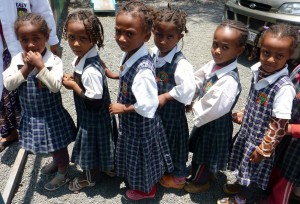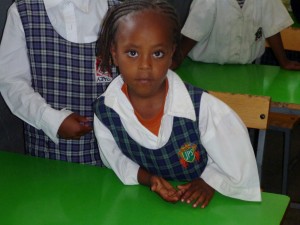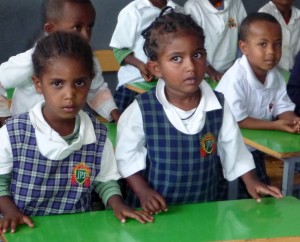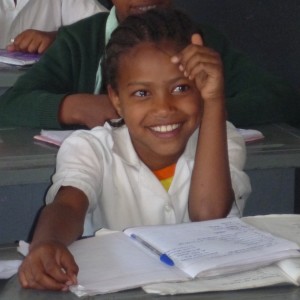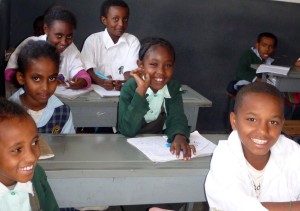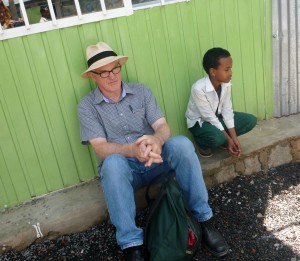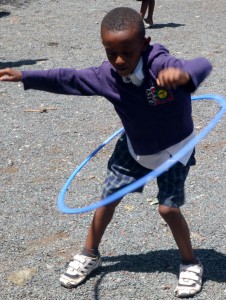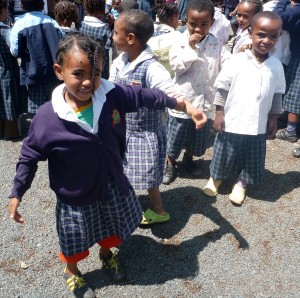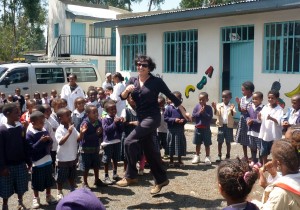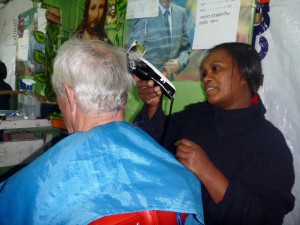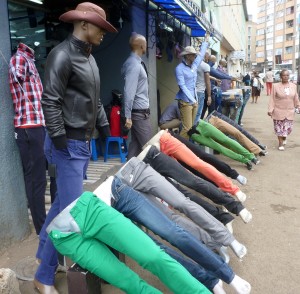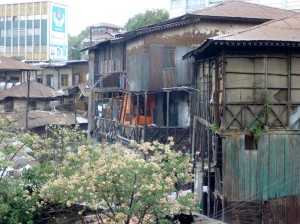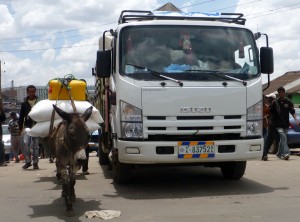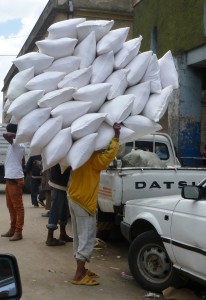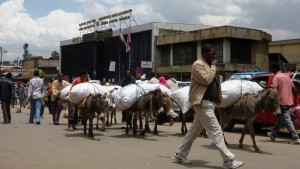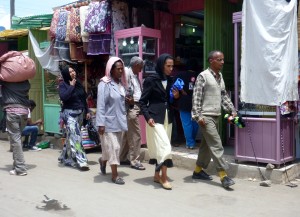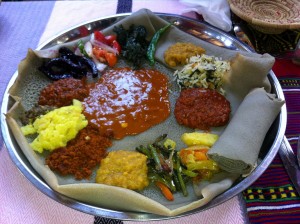The name ‘Addis Ababa’, conjures up thoughts of genies in bottles, bright bazaars and tall elegant people clad in flowing colourful robes.
And the reality of Addis is not so far from such dreams. The women with their slim tall necks and high cheekbones are beautiful; the streets filled with traffic, people and donkeys are always colourful; and the gold and silver shops lining the streets of the Piazza are a treasure trove of jewels.
Unlike many other developing countries, the streets are relatively free of litter and it’s rare to see anyone smoking.
Apparently the lack of smokers is due to the religion being predominantly Orthodox Christian (65%) where smoking is at least discouraged, if not directly forbidden. The Orthodox Christians appear to mix happily with the Muslims (30%) and the other religions.
Walking back to our hotel after dinner one night we lingered by an evangelical church service to observe the theatre of the preacher and the power of the choir. Everyone is singing, dancing and happy.
At 2300 metres high, Addis is the world’s fifth highest capital city. This makes it higher than Mt Kosciuszko (2228m) in Australia and walking up a hill puffs me out.
But there’s always an atmospheric and aromatic local coffee shop just around the corner to stop and revive at with an espresso and delicious local pastry. Coffee is thought to have originated in Ethiopia (unlike in South America, where I always thought it came from) and was cultivated by the Arabs from the 14th century.
With five years of Italian occupation (1936-41), it’s my belief that Addis serves the best coffee outside of Australia and Italy. The locals tell me that coffee is “sorbet for the nose”, cleansing one smell before the next comes along.
I enjoy the local ‘fasting’ menu which includes a large platter of different and delicious vegetable and bean stewed dishes served on top of injera bread. This flat sourdough bread seems a little spongy, but is apparently rich with protein, fibre and minerals. It is made from the seeds of teff grass, which grows on the Ethiopian highlands. I mimic the locals and tear bits of it off to wrap around the stewed food with my right hand, and eat without knives and forks.
As a vegetarian, I am amused that any food without animal products is called ‘fasting’ food, and is eaten by Orthodox Christians during their regular fasts.
Of course Ethiopia also conjures up images of poverty and starving children. There is no doubt this is still an important problem to solve and there are many mothers with small children begging on the streets, but it is less obvious than I might have thought.
One morning I am privileged to visit the Raey Foundation School. The school was set up for kids from very poor homes, where the parents cannot afford to send them to school, nor to properly feed and clothe them.
The kids in grades one to three are given nutritious food, uniforms and a good education. I see the results of this by observing happy, healthy children who seem inordinately keen to learn as much as they can from their young teachers.
The only problem is that there’s no money to keep adding grades on to the school. Unless more support can be found, those in grade 3 will have to leave next year. Alternatively, the school won’t be able to take on any new students for grade one. To donate to this very worthwhile cause, see http://www.raeyfoundation.org/.
Meeting and talking with these children is the rich icing on the magic cake of my visit to Addis Ababa.
